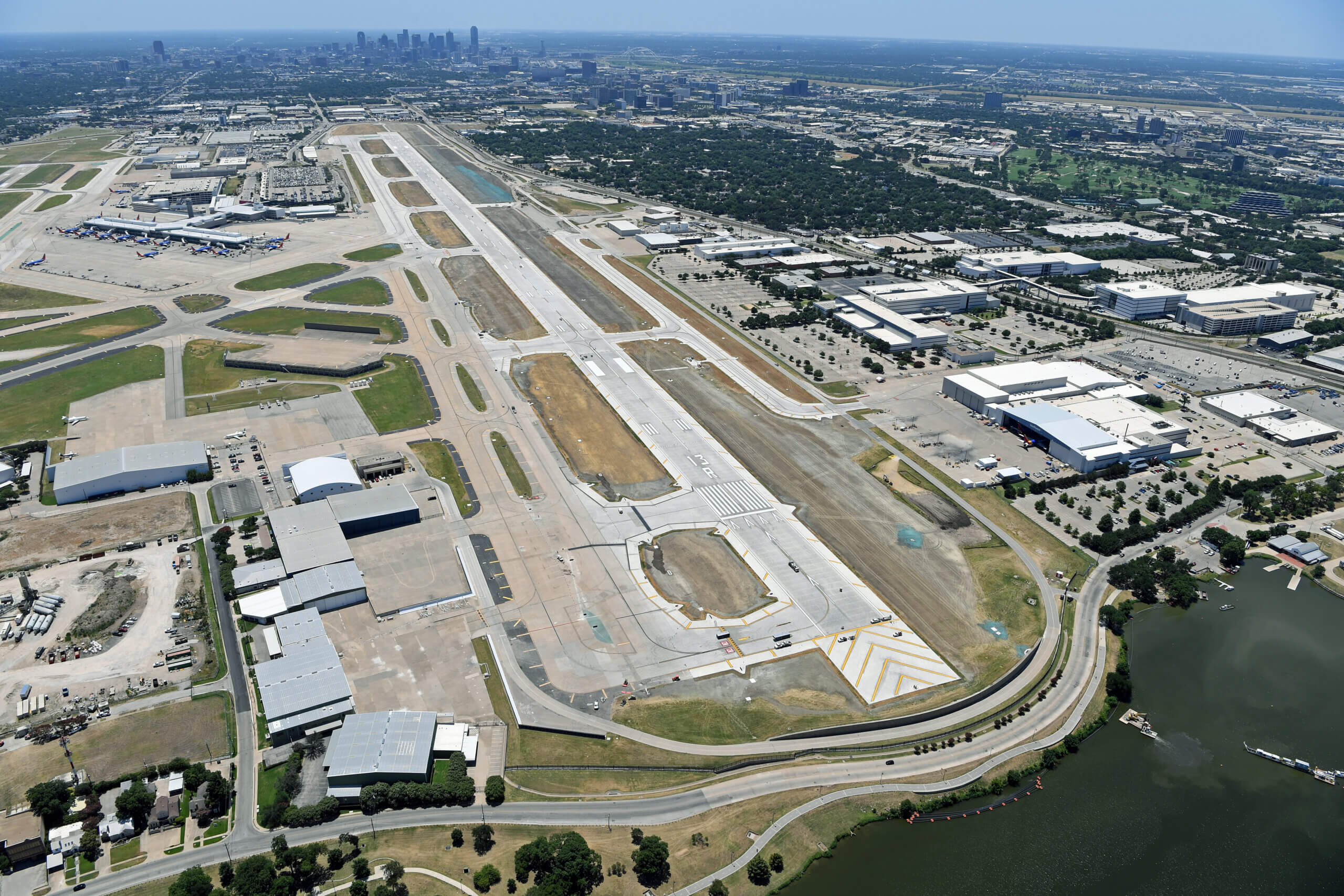Awards & Recognition, Life at Flatiron, Project News
ENR Texas & Louisiana Names Flatiron Project One of Year’s Best

December 12, 2023
Flatiron welcomes the news that Dallas Love Field Runway 13R-31L & Taxiway C Phase 1 Reconstruction has been named Engineering News-Record’s Texas & Louisiana “Project of the Year” in the “Airport/Transit” category. Flatiron was the general contractor on the project. ENR originally published the following article.
Dallas Love Field Runway 13R-31L & Taxiway C Phase 1 Reconstruction
Originally built in the 1960s, Love Field’s main commercial air carrier runway saw its last rehabilitation in 1990. It’s been in service far past its 20-year design life, with pavement evaluations indicating that the runway had deteriorated past the point of repair.
The 8,800-ft-long runway’s complete reconstruction meets FAA design criteria while enhancing airfield safety and improving airfield efficiencies. Scope of work included pavement demolition, reconstructing a portion of a parallel taxiway, new connector taxiways to the runway, upgrades to storm drainage and the runway safety areas as well as new lighting.
To create an efficient layout for aircraft operations, the design team analyzed five years of data in the FAA landing events database, collected via the Airport Surface Detection Equipment, Model X (ASDE-X). This precise ground radar system provides information on runway occupancy times, threshold to exit taxiway distances and deceleration rates for specific aircraft. This methodology resulted in a vastly different taxiway geometry than before, creating a much more efficient airfield with additional capacity.
During design, the team evaluated various construction methods and materials to select the most cost-effective alternative. A life-cycle cost analysis found that concrete was the most cost effective due to the longer service life and reduced maintenance required when compared with asphalt.
Officials originally planned for the runway rebuild to start in early 2020, but they put the project on hold given financial uncertainties amid the pandemic. Construction on the new 30-year design instead began in March 2021 and included a 14-month runway closure.
Among the project’s operational benefits are fewer runway shutdowns thanks to upgrades to adjacent taxiway, drainage, electrical and communications infrastructure.
To counteract impacts from Hurricane Ida on the supply chain, the project team held a partnering session to develop a plan of action. After identifying additional sources of cement and fly ash outside of the local market, the client decided to pay for transportation and delivery costs for materials that came from as far away as Chicago to mitigate schedule delays. Extra crews also came in from Houston to assist with concrete paving.
Crews paved more than 436,000 sq yd of concrete, with 1% removed and replaced due to quality or craftsmanship issues. The runway also received a 99.6% within limits rating, an FAA specification payment deduct mechanism for concrete paving based on quality. Approximately 92% of the base course was recycled existing pavement, while finer material generated through the crushing process found use as pipe bedding. Repurposed demolition waste became temporary haul roads, and 85% of the earthwork saw reuse, reducing hauling efforts.
In total, the project team reduced a projected seven-month delay to four months and cut two months from the overall project schedule to reach substantial completion in October 2022.
